Maltese cuisine is totally fascinating and deserves to be on your travel bucket list. Influenced by Italian, Mediterranean, and Arab flavours, it showcases a delightful blend of fresh, simple ingredients, hearty recipes, and centuries-old traditions that may surprise you. By experiencing traditional food in Malta during your trip, you’ll gain an authentic taste of the island’s culture and soul.
Table of Contents
Where to Eat in Malta: A Taste of the Island’s Restaurant Scene
When you visit Malta, you’ll quickly discover that its dining scene is as diverse as its history. From rustic family-run eateries to stylish modern restaurants, there’s something for every taste and budget.
PLAN YOUR TRIP TO MALTA
To get the most out of your visit to Malta, enjoy the convenience of the all-inclusive Malta Multi Pass. It includes open-top bus rides, cruises, and entry to Heritage Malta and other attractions.
During your trip, you can stay in touch with family and friends with Holafly eSIM and enjoy an unlimited connection at 3G/4G/LTE speeds.
Renting a car in Malta allows you to explore any beach or attraction at your own pace. Plus, you can travel with confidence by securing Heymondo travel insurance, ensuring that your adventures are worry-free.
If you’re craving authentic local flavours, head to traditional Maltese ħwienet or small tavernas, where you can savour home-cooked classics like stuff at tal-fine (rabbit stew) and fresh seafood prepared with love and generations of know-how.
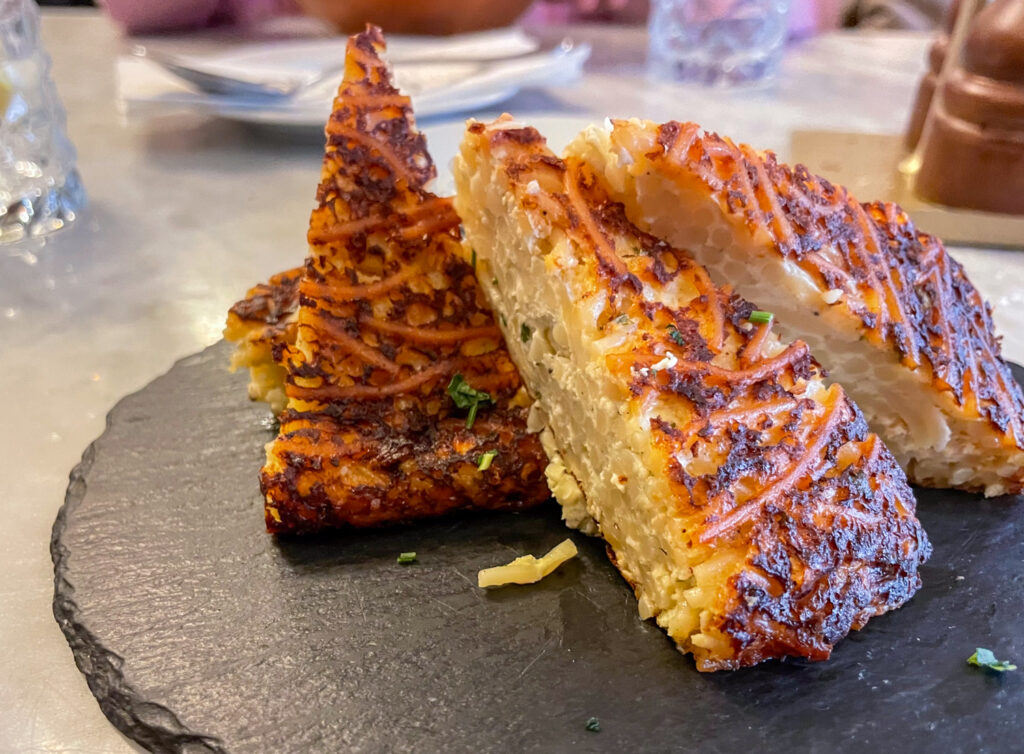
For a more upscale experience, Malta offers elegant fine dining spots, often located in historic buildings or with breathtaking sea views. Here, chefs blend Mediterranean ingredients with contemporary techniques, creating dishes that are both innovative and deeply rooted in local traditions.
If you’re after casual, relaxed vibes, seaside fish restaurants line the coasts of towns like Marsaxlokk and St. Julian’s. These places specialise in fresh catches of the day, grilled or fried, paired with a glass of local wine or beer.
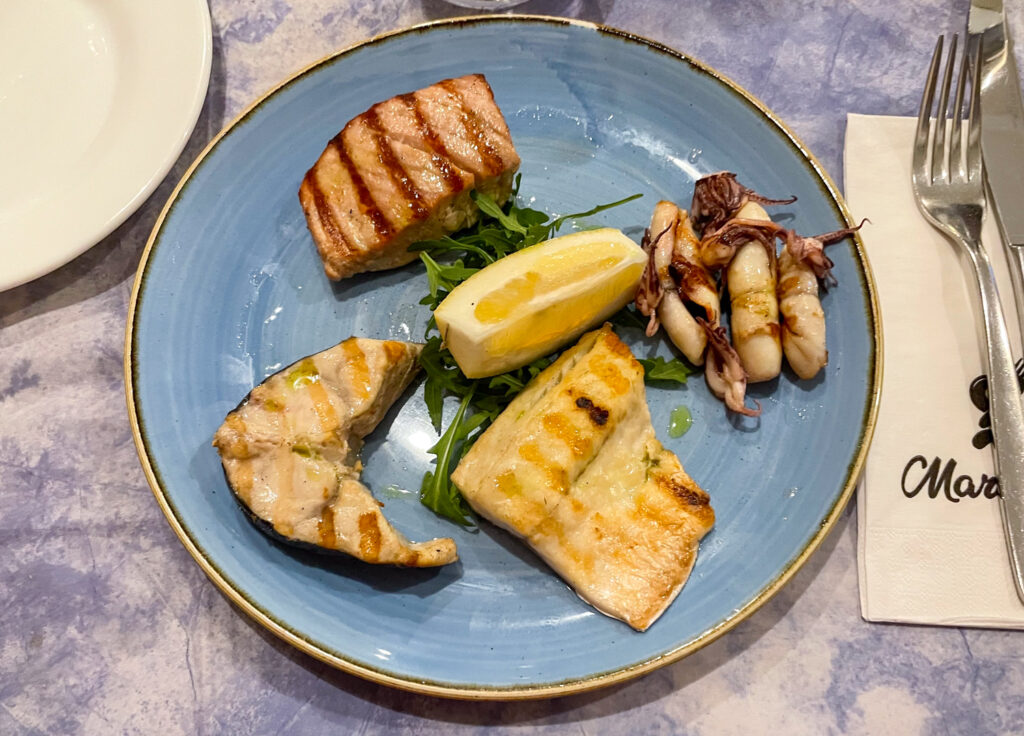
Pizza joints and international eateries are plentiful, too, reflecting Malta’s cosmopolitan character and welcoming atmosphere. Don’t miss out on the bustling markets and street food stalls, where you can try quick bites like pastizzi or ħobż biż-żejt while soaking up the lively local ambience.
Maltese Cuisine: Similarity with Italian, Mediterranean, and Arab Food
If you dive into Maltese traditional food, you’ll soon find that Maltese cuisine reflects the island’s unique position at the crossroads of cultures. You can even find amazing curry on the island, due to its British past! However, the influences of Italian cuisine, especially Sicilian, and the broader Mediterranean traditions are quite evident.
Maltese cuisine focuses mainly on fresh seafood, olive oil, and vibrant vegetables. Additionally, there is a noticeable Arab heritage in certain dishes and flavours, characterised by spices, sweet and savoury combinations, and distinct pastry techniques.
This rich cultural blend makes Maltese cuisine wonderfully unique. If you’re unfamiliar with Mediterranean cuisine, trying traditional dishes will be a delightful surprise. Personally, I was surprised to discover that some traditional Maltese dishes are pretty similar to those I enjoy in Southern Italy!
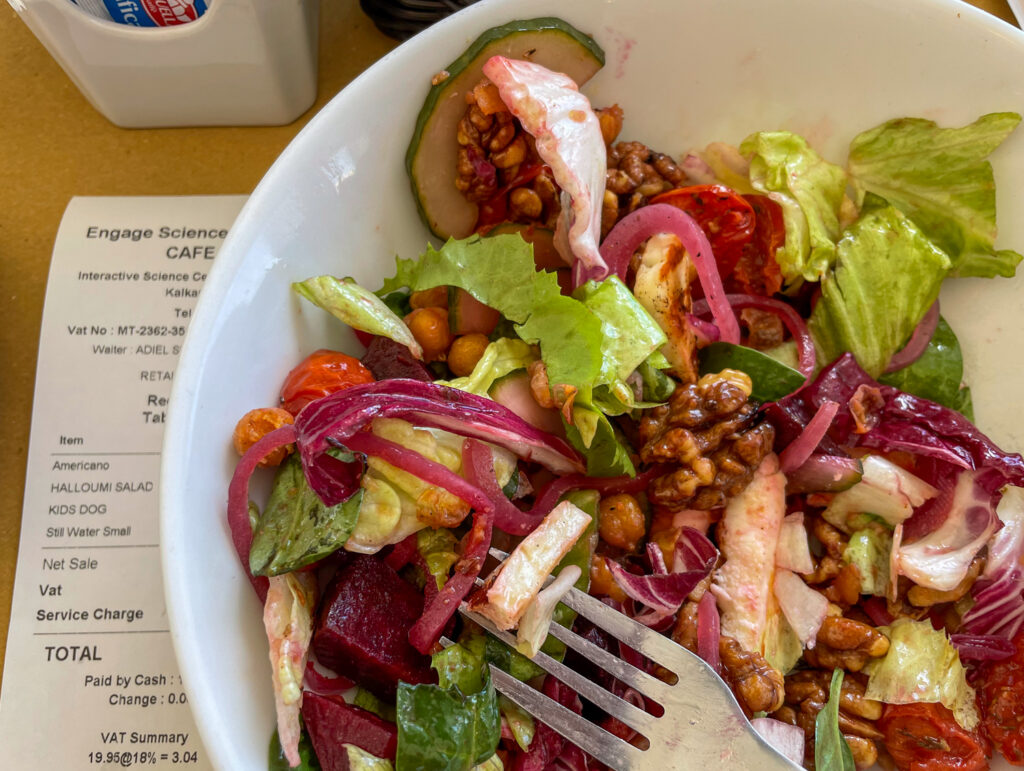
Traditional Maltese Food You Should Try
Maltese cuisine showcases a rich blend of Mediterranean flavours. You can’t miss pastizzi, flaky pastries filled with creamy ricotta or savoury peas, and the hearty rabbit stew infused with aromatic herbs.
Try ftira, a traditional Maltese bread that is wonderfully crusty yet soft inside. For dessert, indulge in kannoli, sweet pastries filled with velvety ricotta. There are many dishes worth trying, and you can find more traditional Maltese foods in the following list.
1. Ftira
Ftira is a type of Maltese flatbread. The sandwich, often referred to as a tuna roll, typically includes ingredients such as tomato paste, olive oil, tuna, and various Mediterranean items like olives, capers, sun-dried tomatoes, Gozo cheeselets, pickled vegetables, and fresh salad.
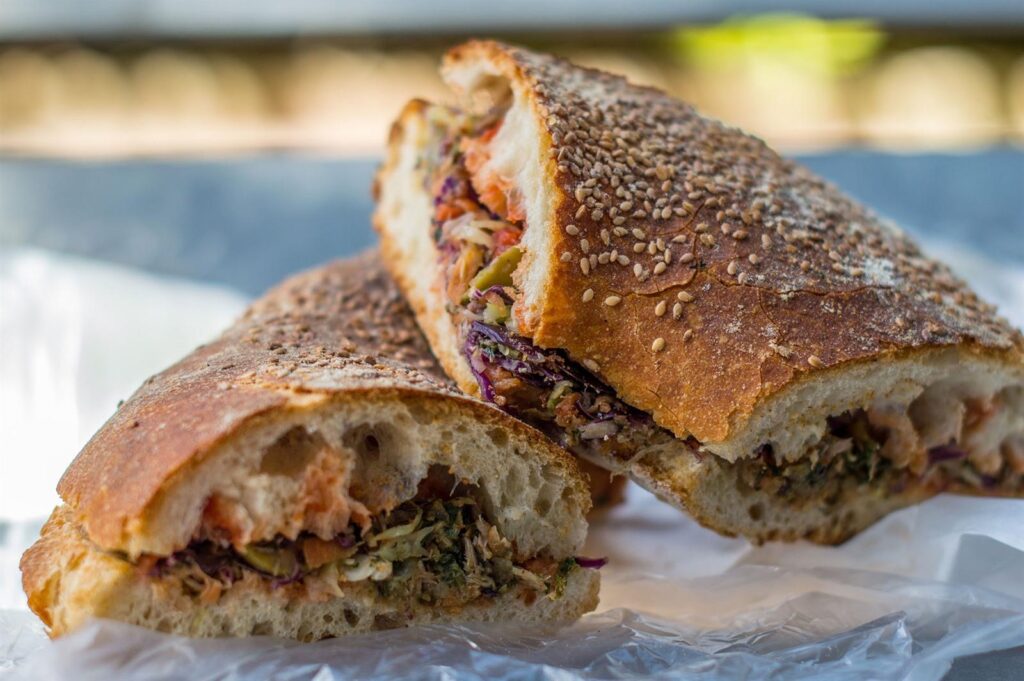
2. Pastizzi
A pastizz is a traditional savoury pastry from Malta. Pastizzi typically come with a filling of either ricotta or curried peas, referred to as pastizzi tal-irkotta and pastizzi tal-piżelli in Maltese. These pastries are a popular and well-loved staple of Maltese cuisine. They are both inexpensive and quite addictive!
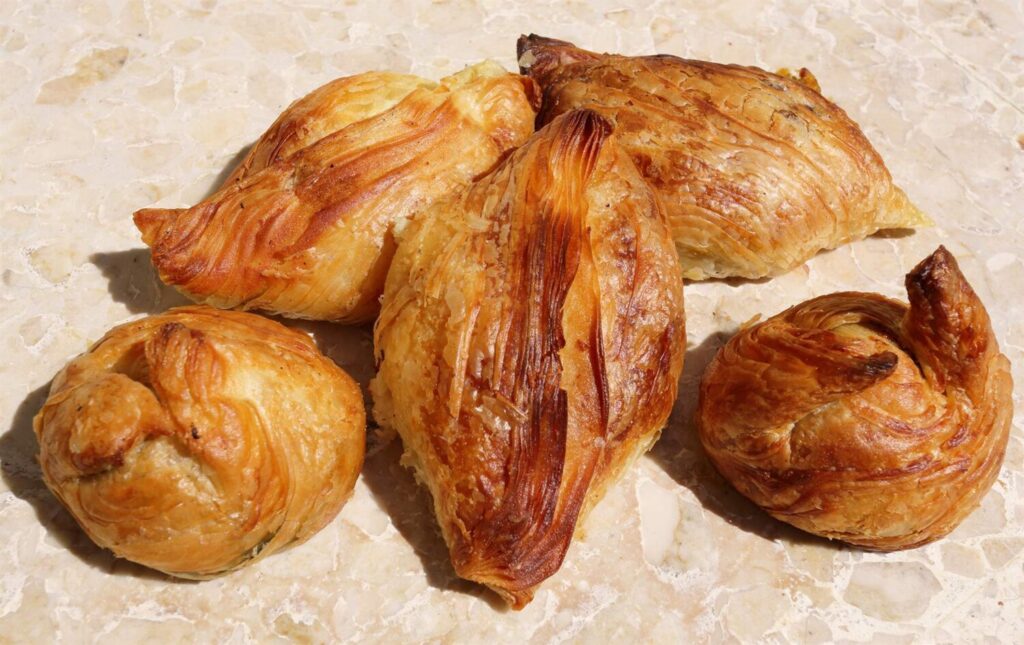
3. Ħobż biż-żejt
Literally meaning bread with oil, ħobż biż-żejt is a traditional Maltese snack consisting of bread rubbed with tomato paste and topped with olive oil, tuna, olives, capers, and herbs. It’s simple, fresh, and satisfying.
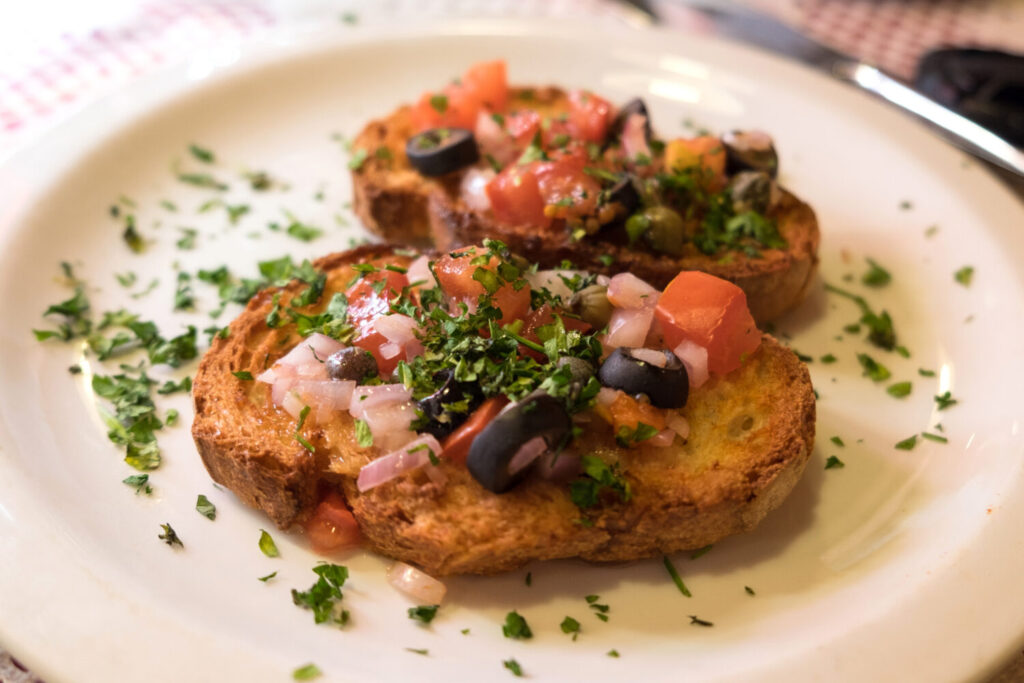
4. Stuffat tal-Fenek (Rabbit Stew)
A must-try for meat lovers is stuffat tal-fenek, a slow-cooked rabbit stew quite popular in Maltese cuisine. Although rabbit is now mostly imported into the country (as I learned at the science museum Esplora), this stew is still considered Malta’s national dish.
Stuffat tal-fenek is made with a variety of flavorful ingredients. The dish typically involves marinating pieces of rabbit in a mixture of herbs, spices, and sometimes wine before slow-cooking them.
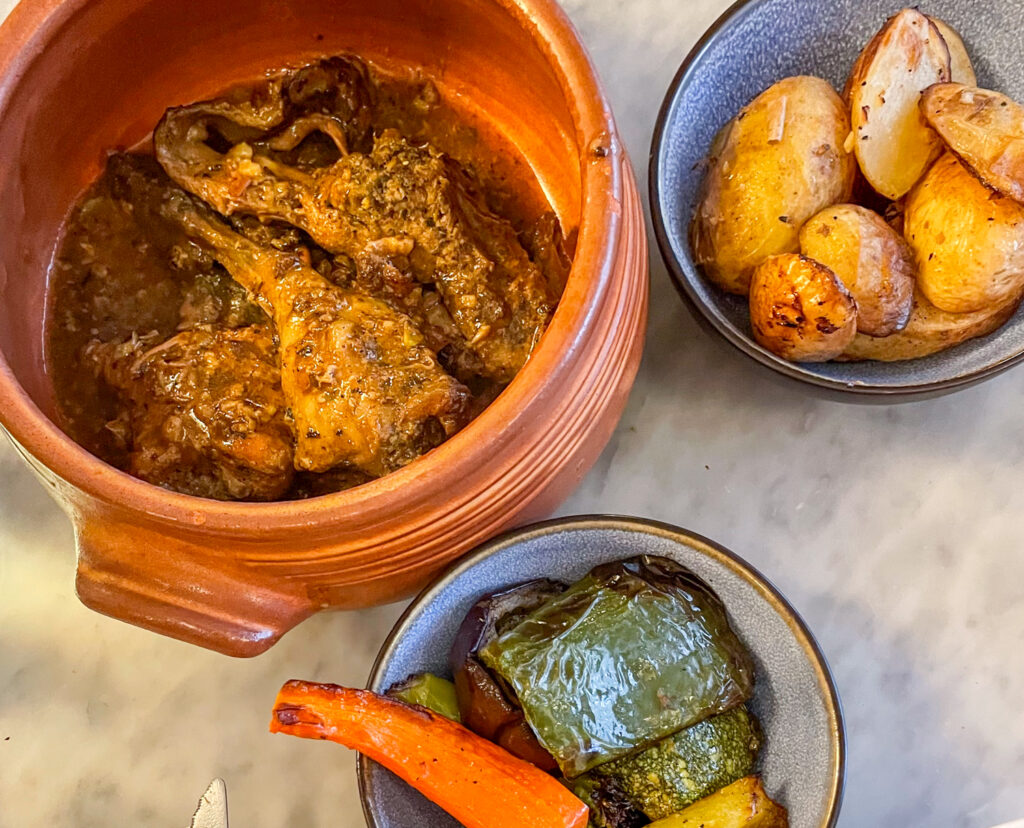
5. Timpana
Timpana is a baked pasta pie made with macaroni mixed with minced meat and Bolognese-style tomato sauce. It is baked in a pastry case, either in a deep dish or a baking tray, until golden brown. You can find this dish in typical pastizzerias at a very affordable price. This food is totally hearty and comforting.
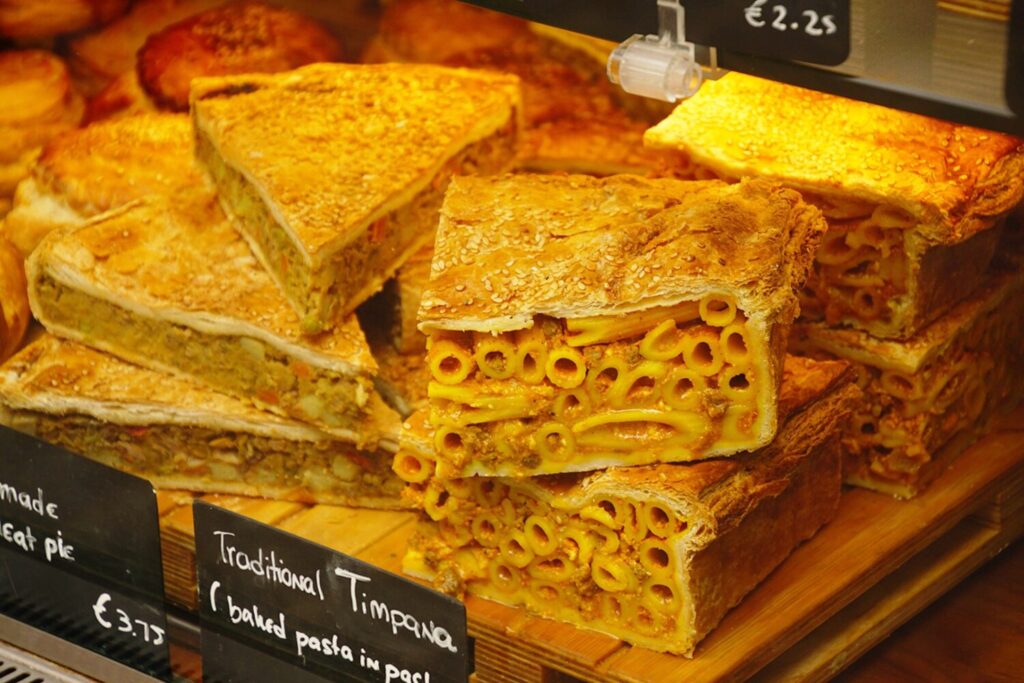
6. Bigilla
Bigilla is a traditional Maltese dip that has a slightly spicy flavour. It is made from mashed dried broad beans (ful ta’ ġirba), olive oil, salt, and chilli flakes.
This dip is quite similar to ful medames, popular in Middle Eastern cuisine. However, bigilla has a thick consistency and is made by mashing broad beans, garlic, and herbs. It is typically served with bread or crackers as an appetiser.
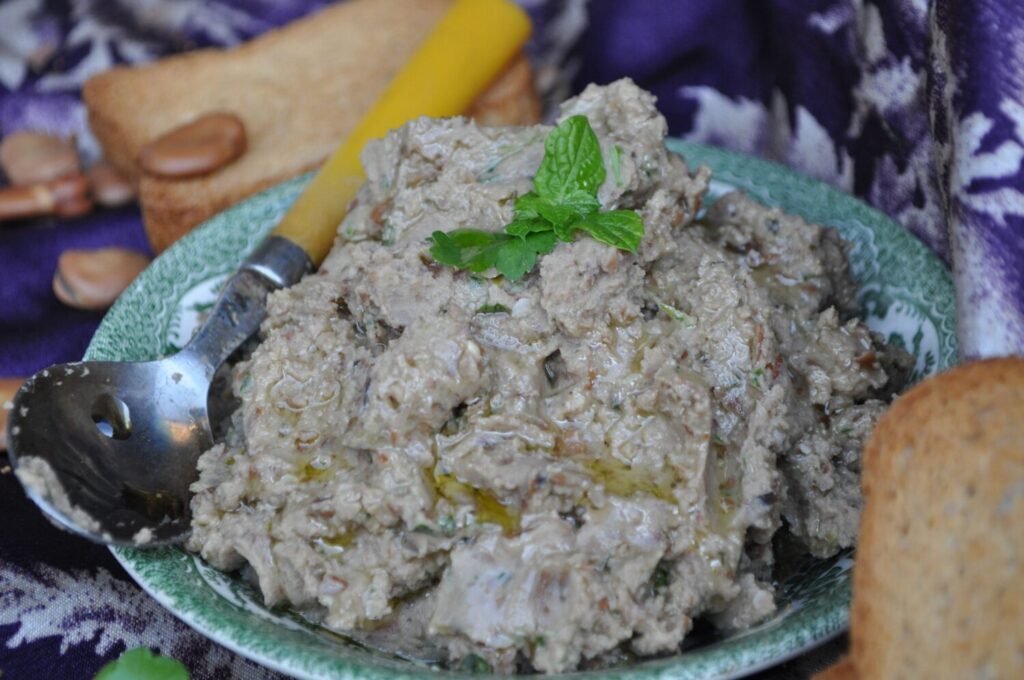
7. Kapunata
Kapunata is a traditional Maltese dish known for its rich flavour and aroma. It originates in Mediterranean cuisine and resembles French ratatouille or Italian caponata.
The main ingredients include a variety of vegetables, particularly eggplant, tomatoes, onions, peppers, and garlic. Kapunata can be served warm or cold, making it a versatile vegetarian option.
8. Aljotta
Alijotta is a garlicky fish soup typically made with rockfish, rice, and herbs. It is warming and full of Mediterranean flavour. In Malta, a devoutly Catholic country, alijotta is particularly popular during Lent when meat is not consumed. In keeping with the rustic and frugal Maltese cuisine, this soup uses the whole fish, head and tail included, to enhance its flavour.
9. Bragioli (Beef Olives)
Maltese bragioli, commonly called “beef olives”, is another traditional national dish of Malta. Despite the name, this dish doesn’t actually contain any olives.
Bragioli consists of slices of beef wrapped around minced meat, egg, and breadcrumbs filling. The wrapped beef is then braised in red wine and tomato sauce, resulting in a flavourful meal.
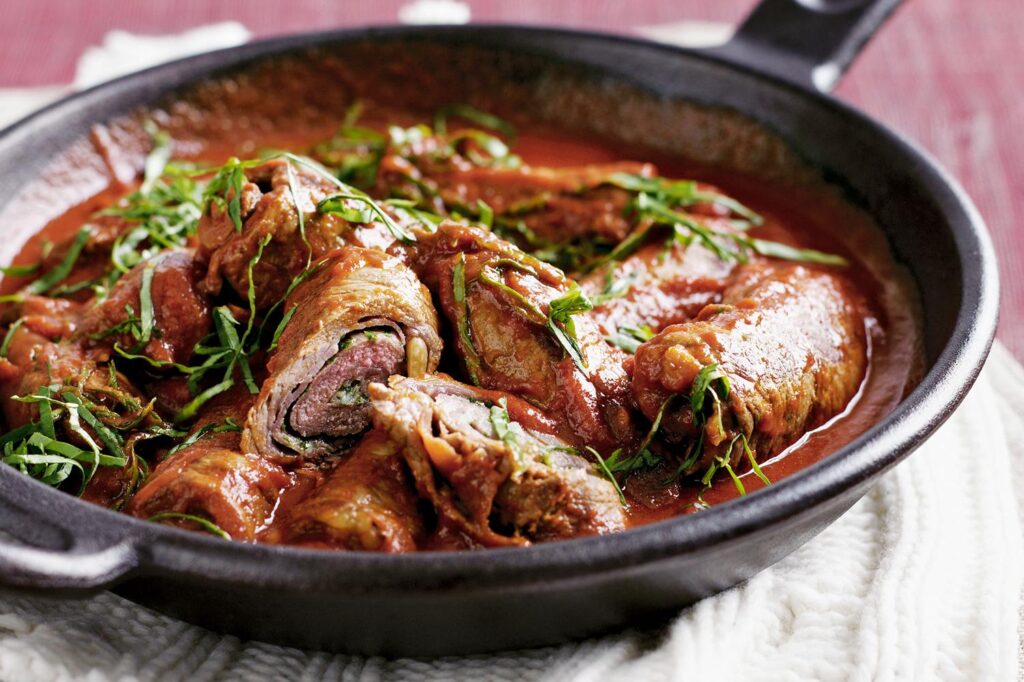
10. Kannoli (Maltese-Style Cannoli)
Kannoli, known as cannoli in Italy, are a delicious Sicilian treat consisting of pastry rolls filled with sweetened ricotta cheese. They are among the most popular desserts in Malta.
Unlike the traditional Sicilian version, filled with ricotta and often flavoured with citrus or vanilla, the Maltese variant has its own unique characteristics. Kannoli are available in cafes and bakeries throughout the archipelago and come with many fillings, including chocolate, nuts, candied peel, and fresh fruit.
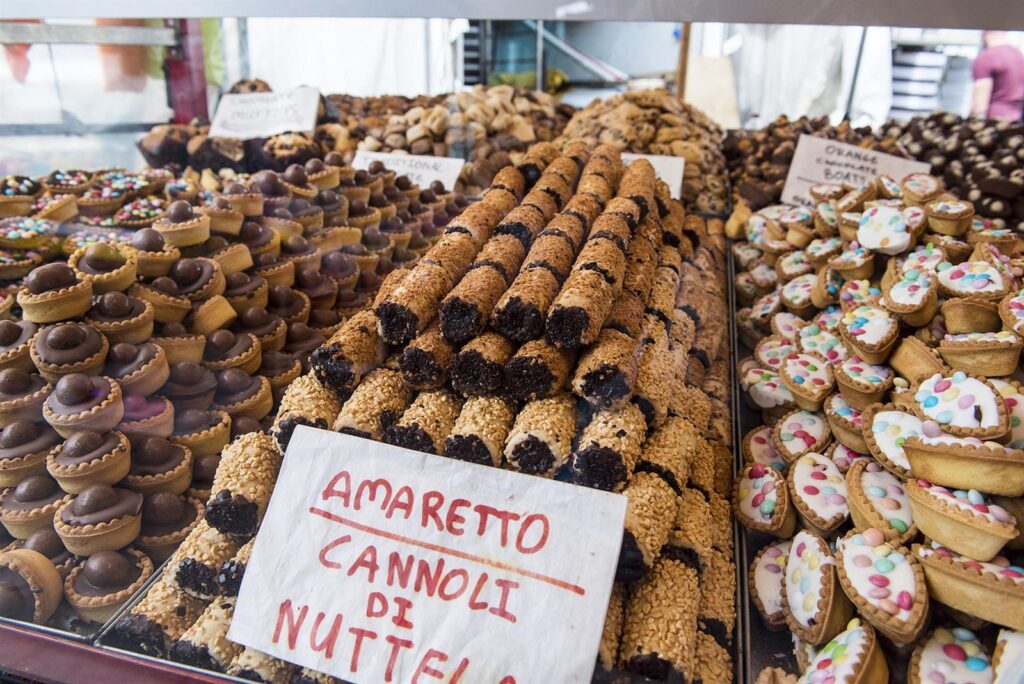
11. Imqaret
Imqaret are a traditional Maltese dessert consisting of a thin, fried sweet pastry filled with a flavorful mixture of spiced dates and citrus. These treats have their roots in Arab cuisine, and you can find a similar dessert called maqrout in Maghreb cuisine. Imqaret, with their unique sweet, sticky, and delicious taste, are often sold at markets and festivals.

12. Qagħaq tal-Għasel (Honey Rings)
The traditional qagħaq tal-għasel, also known as honey or treacle rings in English, are spiced pastry rings filled with treacle and aromatic spices. These delicious treats are available throughout the year, but are especially associated with Maltese traditions during the Christmas season.

Where to stay in Malta
The best areas to stay in Malta are St. Julian’s, St. Paul’s Bay, and Valletta. St. Julian’s is well-known for its vibrant nightlife, making it an ideal spot for those looking to enjoy evening entertainment. A great place to stay in St. Julian’s is the stunning Mercure St. Julian’s Malta.
Valletta, the walled fortress city and capital of Malta, is filled with beautiful churches, museums, and palaces. I recommend Valletta for a romantic city break, and the luxurious AX The Saint John is the best hotel for an unforgettable stay.
St. Paul’s Bay is perfect for family trips, as it offers a calmer atmosphere compared to St. Julian’s and Valletta, along with several great playgrounds for children. For accommodation, you can choose the Best Western Premier Malta.
Take Away: Experience the Real Malta Through Its Foods
In conclusion, experiencing Maltese cuisine is an essential part of immersing yourself in the rich culture and traditions of the island. Whether you dine in a cosy taverna, enjoy fine dining with stunning views, or indulge in local street food, each meal tells a story shaped by centuries of cultural influences.
From the flaky pastizzi to the hearty stuffat tal-fenek, every traditional dish reflects the unique blend of Italian, Mediterranean, and Arab flavours that define Malta’s culinary heritage. As you explore the diverse dining options and savour the authentic tastes of Malta, you’ll not only delight your palate but also connect deeply with the vibrant spirit of this enchanting island.
So, pack your bags and get ready for a delightful gastronomic adventure that makes your trip to Malta truly unforgettable. And don’t forget to share your favourite Maltese dishes in the comments.

10 comments
As a fish lover, reading about all these tasty dishes really made my mouth water. I’ll skip the aljotta to avoid arguing with my husband, but I definitely wouldn’t miss a good grilled fish at a restaurant in Marsaxlokk!
Grilled fish in Malta is amazing! Although many fishing villages such as Marsaxlokk have become a bit touristy, dining out can be expensive, but fresh fish is definitely worth every penny!
We have been thinking about Malta for a different weekend for a few years now. We are very inspired by its thousand-year history and its cuisine, which judging from the photos seems very inviting. However, I have always heard very contrasting opinions about this island, its inhabitants and its cuisine. There are those who love it and those who harshly criticize it.
I was a bit crossed too about Malta before this trip. There is a lot of history and culture, but the traffic is crazy and there is no good public transport. Water supply on the island is a big issue too as well as overtourism in summer. However you can have a great trip during low season!
I have never had the chance to try Maltese cuisine, but I notice similarities not only with Italian cuisine but also with Cypriot cuisine (which takes a lot from Greek). I am very inspired by its desserts, less so the rabbit stew that I don’t eat even here in Italy.
Cyprus inspires me a lot, I can’t wait to go there and taste these similarities!
Food is one of the aspects I loved most during my stay in Malta. I got simply mad about pastizzi with ricotta, I even bought some to bring home. Yes, they definitly are addictive! Imqaret, on the contrary, is to sweet for me.
I totally agree with you. Maltese street food is really good!
I’m so hungry now, thanks Paola!!! I’m glad it’s almost lunch time so I don’t have to endure my hunger for too long.
I visited Malta a few years ago and I fell in love with it and its food. From the delicious pastizz for a snack or the incredible rabbit stew. I always reccomend Marsaxlokk for the freshest food, after all this is the place where the food market is held everyday with fresh produce and fresh fish.
I’ve loved every single lunch and snack and dinner in Malta, mostly because I could feel and taste the Sicilian’s influence and I felt like at home.
I loved Marsaxlokk, but unfortunately, I find its restaurants a bit too touristy. I guess I should go back and find new tasty spots!